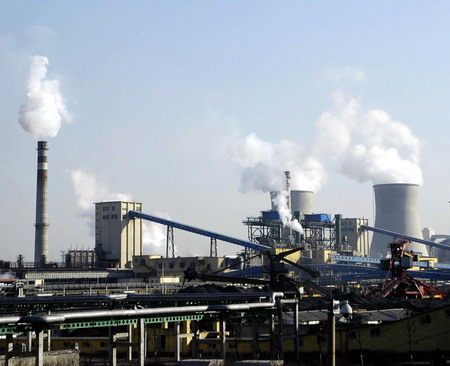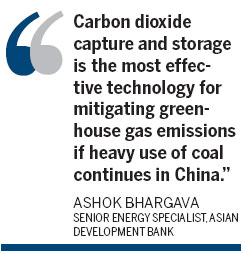Energy
ADB promotes CO2 capture
By Lan Lan (China Daily)
Updated: 2010-05-17 09:25
 |
Large Medium Small |
|
 |
|
A coal chemical factory in East China. The Asian Development Bank is closely analyzing the feasibility of using a carbon dioxide capture and storage application, which it says is the most effective technology for mitigating greenhouse gas emissions from heavy use of coal. [Shan Shi / For China Daily] |
BEIJING - The Asian Development Bank (ADB) has called on China to promote the use of carbon dioxide capture and storage, an emerging technology that it said can greatly reduce greenhouse gas emissions. However, Chinese researchers said it was unlikely to be the first choice for China because of its high cost in comparison with alternatives.
"Carbon dioxide capture and storage (CCS) is the most effective technology for mitigating greenhouse gas emissions if heavy use of coal continues in China," said Ashok Bhargava, senior energy specialist at ADB's East Asia Department.

The bank's energy team is closely analyzing the feasibility of CCS application in China with local institutions. The bank is ready to finance potential projects that could gain approval from the government, he said.
"The Chinese government hasn't shown clear longer-term vision at the moment to adopt the technology," he said.
CCS is in its initial stages of development globally so countries that move forward first will gain significant benefits and can export technologies to others, he added.
ADB has approved a $135 million loan and $5 million technical assistance to fund the construction and operation of a coal-fired integrated gasification combined cycle power plant (IGCC) in the northern Chinese city of Tianjin.
IGCC is a clean coal technology that turns coal into a synthetic gas, removing impurities before the gas is burned in a turbine. It cuts greenhouse gas emissions by 10 to 20 percent and only a fraction of the sulfur dioxide and nitrogen oxide pollutants escape, according to Bhargava.
The Tianjin demonstration IGCC plant will start operation in 2011 with a production capacity of 250 megawatts per year, which is expected to increase to 400 to 500 megawatts over the next five years.
China Huaneng Group holds a majority share in the plant, with the rest equally held by eight companies including two major domestic coal companies and the largest US private coal company, Peabody Energy.
It is the only such project to have been approved by the Chinese government and also the first of its kind to be built in a developing country.
Bhargava said it was still to be determined whether the CCS technology would be applied at the plant. The plan is to capture and store 30,000 metric tons of carbon dioxide per year from the plant.
Ma Zhong, president of the Institute of Environmental Studies at Renmin University, said he thought CCS would not be a major method for cutting greenhouse gas emissions in China because of its high cost.
"Although CCS is the most efficient coal clean technology, there are various other low-cost technologies enabling a reduction in emissions that have yet to be fully applied in China. CCS isn't an economic option suited to China's conditions," he said.
China doesn't own the core technologies for CCS so it would generate high costs in transferring the patented technologies, he added.



